

Gone are the days of ugly, white compression socks that your grandma used to wear with her Dr. Scholl’s sensible shoes! Compression socks today are still good for your health–but they can also be super cute. So you don’t have to sacrifice fashion for function.
Let’s talk women’s compression socks 20-30 mmHg…
Looking to Buy a Pair of Women’s Compression Socks 20-30 mmHg Pressure Rating? Click the button below to see the lineup of ComproGear Women’s Compression Socks:
How Compression Socks Work
Compression socks for women promote health while providing ultimate comfort for swollen, tired legs with aching muscles. They also support healthy blood circulation to promote normal activities of your body like cellular regeneration and tissue growth. Compression socks can also lend support to weak or overworked ankles during recovery time following sports training or athletic events. By wearing these highly supportive compression socks, you can recover at optimal speed and capacity while improving your leg health and levels of comfort.
Compression sock styles come in a variety of materials, including cotton, wool, nylon and spandex. Many styles of compression stockings 20 30 mmhg knee high for women are blends of multiple materials for ideal compression and leg support.
Compression Socks Strengthen and Enhance Leg Health

Women’s compression socks with graduated pressure offer the highest degrees of pressure at the ankle, with gradually reduced pressure moving upward on the leg. This design improves blood circulation through the leg and up into your body toward your heart and lungs, without squeezing too tightly at the top of the calf.
Understanding Compression Levels
Compression socks are typically sold with a range of numbers that show the graduated compression levels they offer. Standard compression ranges for these compression socks are 15-20 mmHg (sold over the counter or in stores), 20-30 mmHg (medical class I), 30-40 mmHg (medical class II) and 40-50 mmHg (medical class III).
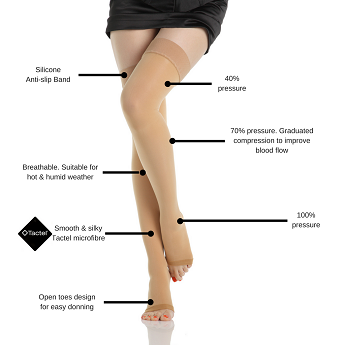
You may find compression socks with other compression ranges as you shop. However, these four are most commonly found in compression socks styles today.
Your family doctor or sports physician can determine which level of support you need, depending on the reason you are using them.
Manufacturers and knowledgeable sellers of this specialized foot-and-leg-wear can also help you select the best compression socks for women. Your local pharmacist can probably answer questions for you about the level you might need.
The unit of measurement used in compression socks is the same as that used to measure blood pressure levels. ( mmHg stands for Millimeters of Mercury. ) It’s kind of like when you go to the doctor and they place the squeezing sleeve on your arm, but that pressure is much higher than what you’ll find in a compression sock.
For example, when you wear compression socks with a number range of 20-30 mmHg, the idea is that the level of compression will not drop below 20 mmHg and will not rise above 30 mmHg (millimeters of mercury).

All About Compression Sock Levels
Compression socks for women made in various materials are typically available with the following compression levels:
Over the Counter: 8-15 mmHg and 15-20 mmHg
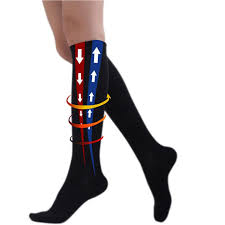
Compression Socks with this range of graduated compression are an excellent choice for reducing mild leg swelling and fatigue after inactivity from long periods of standing and sitting.
They are also recommended for alleviating weakness and pain in the ankles and lower legs following strenuous exercise. Knee-high socks of this type come in a myriad of colors and styles to compare when shopping.
Women’s designs are available in a variety of styles, from sports socks, modern stripes and cute designs to business casual, dress and even high-fashion, sheer selections for compression socks.
They can be bought over the counter in drug stores and in many retail stores and online marketplaces.
Compression socks offering 8-15 mmHg or 15-20 mmHg of pressure are helpful for supporting leg comfort while controlling swelling during airline travel and long trips by train, bus or car.
Medical Grade Class I (20-30 mmHg):
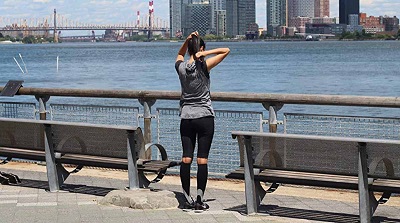
This degree of compression in knee-high socks is the first medical grade (20-30 mmHg). Compression Socks of this grade are the most frequently used by women since they offer reliable compression levels without causing discomfort and cutting off circulation.
Here’s where women’s compression socks 20-30 mmHg comes in.
These compression socks are perfect for managing leg swelling due to inactivity, strenuous workouts or sports, and for treating spider veins and varicose veins in women.

Many pregnant women find welcome relief from feelings of heaviness and pain or from swelling of the legs when they wear these compression socks.
These socks are also available in many different styles, colors, and materials, from casual sports designs to sheer fashionable varieties.
If your doctor recommends this level of support in compression socks to improve your leg health and comfort, you may gain significant benefits by wearing them frequently during the many activities of your busy lifestyle.
Looking to Buy a Pair of Women’s Compression Socks 20-30 mmHg Pressure Rating? Click the button below to see the lineup of ComproGear Women’s Compression Socks:
Medical Grade Class II (30-40 mmHg):

This level in compression socks is used to control moderate to severe symptoms of health problems in the legs. They are especially useful as a treatment for a blood clot or deep vein thrombosis (DVT) affecting the leg.
This grade of compression socks is also used to treat leg swelling and discomfort in patients who suffer from lymphedema. When shopping for these 30-40 mmHg compression knee-socks, be sure to select socks made of strong, long-wearing material. Sheer styles in this grade of socks can easily snag, run or tear.
Medical Grade Class III (40-50 mmHg):

Compression socks of this highest grade offer powerful support to the legs. They are very helpful for the medical treatment of severe wounds, serious venous stasis, and advanced lymphedema, particularly post-surgery.
If you or anyone you know is considering buying these medical-grade class III socks, you should be sure to consult your physician or natural healthcare practitioner to ensure that this grade is suitable for you.
These therapeutic socks are also available in a wide variety of styles and color choices, such as black as well as multiple shades of red, blue, green or yellow to please all fashion tastes and preferences.
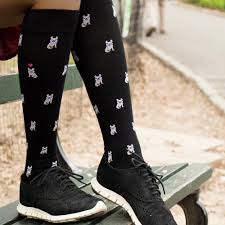
Related Articles
- Compression Sleeves for Legs
- Sock Soothers
- Compression Socks for Men
- Medical Compression Socks
- Best Compression Socks for Swelling
- Wide Calf Compression Socks
- Easy To Put On Compression Socks for Elderly
- Best Compression Socks for Swelling
- Can You Wear Compression Stockings 24 Hours a Day
- Toeless Compression Socks
- Do Compression Socks Help Gout
Do You Need a Prescription to Fit and Purchase Compression Socks?
While most women’s compression socks can be purchased without a prescription, some medical-grade knee-high compression socks may require a prescription from your physician for purchasing. Your prescription will specify the prescribed compression strength according to your diagnosis and needs for leg support.
Details of the compression socks design may also be included in your doctor’s prescription, such as an open or closed sock toe or specific brand choices. In any case, you can buy your compression socks online or in a local pharmacy.

Prescriptions for medical-grade colorful 20-30 mmHg compression socks and other medical grade classes in these socks are typically filled at a medical supply store or online.
If you aren’t sure about the pressure grade you need, you can stop in to a local pharmacy for help. They will measure your feet and lower legs carefully to ensure that your compression socks will fit perfectly. These professionals know that the ideal time to measure your legs is in the early morning when they will have the least degree of swelling.
If you have seriously swollen legs, your doctor may recommend wrapping them in compression bandages before your sock fitting to suppress swelling.

What Is the Best Way to Put On Compression Socks?
The easiest way for many people to put on a compression sock is to start with the sock rolled down or folded inside out at the ankle. Pull or unroll the sock upward on your leg evenly, keeping it smooth and unwrinkled.
Always put your compression socks on first thing in the morning. If you put on your socks after showering, be sure that your legs are completely dry first.
If your legs are slightly swollen before you pull on your socks, put them on slowly, and if your legs have excessive swelling, lie or sit down and elevate them until the swelling subsides somewhat.
Never fold your compression socks over at the top, as this may lower the rates of blood circulation in your legs, causing more swelling and discomfort.

Choosing Your Favorite Colors and Styles for Compression Socks
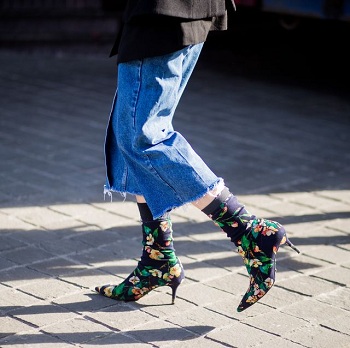
If you are like the majority of shoppers today, you don’t want your compression socks to look like something your grandma would wear! The good news is that compression socks for women now come in a wide array of fabrics and blends, weights, styles, and colors. Whether you fancy red, blue, black or striped compression socks, these colors and many more are now on the consumer market. Styles in cute patterns and theme designs are also becoming more popular as time passes.
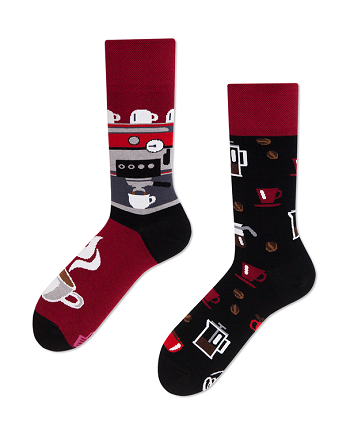
Whether you need 20-30 mmHg compression socks to alleviate leg aches and swelling after strenuous sports activity or for treatment of spider veins and varicose veins, you are sure to find appealing styles with the ultimate fashion and flair to brighten and enliven your contemporary wardrobe and lifestyle.
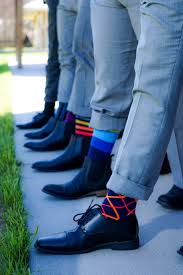
Looking to Buy a Pair of Women’s Compression Socks 20-30 mmHg Pressure Rating? Click the button below to see the lineup of ComproGear Women’s Compression Socks:
This page last updated January 7, 2022
